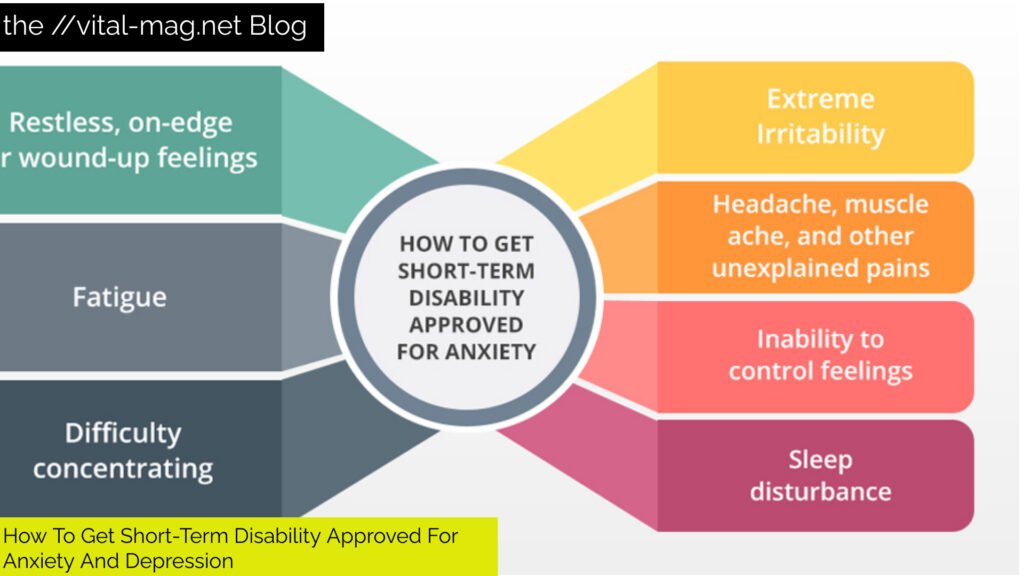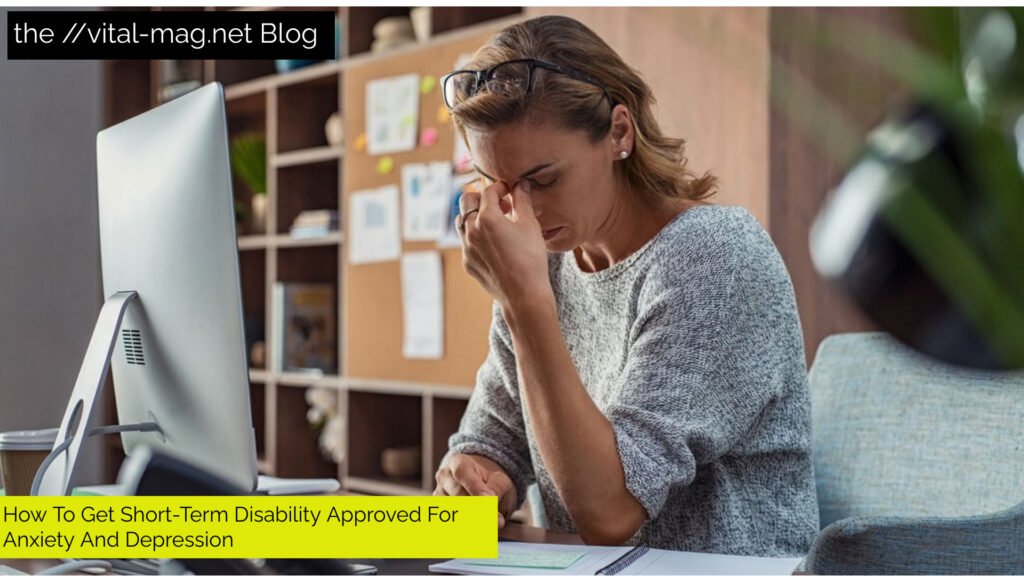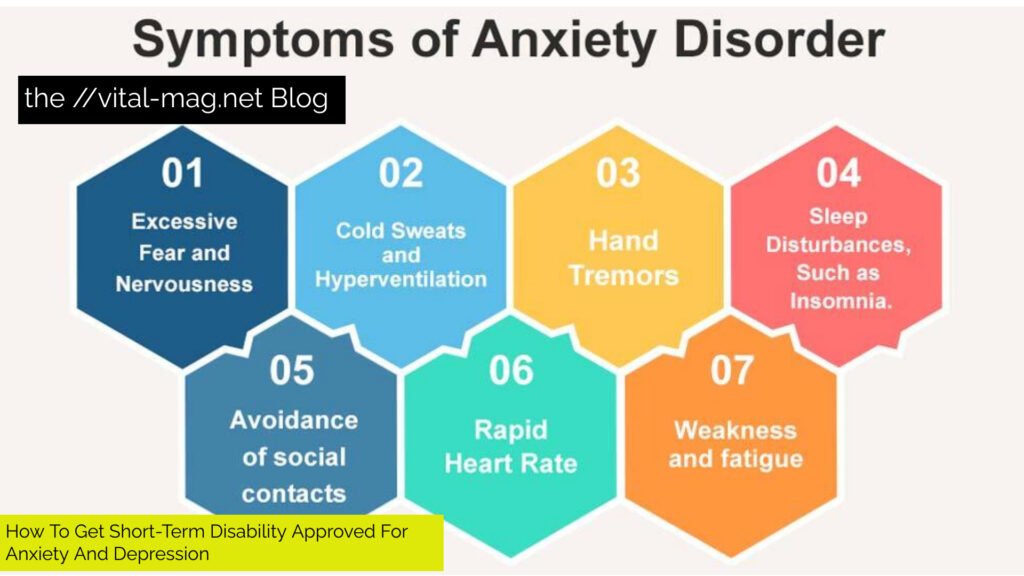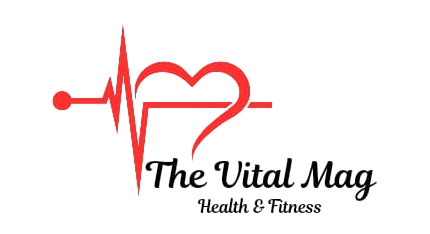How To Get Disability Approved For Anxiety And Depression to get disability approved for anxiety and depression,the first step is to gather comprehensive medical documentation that demonstrates the severity of your condition. The Social Security Administration (SSA) requires evidence from healthcare professionals, such as psychologists or psychiatrists, detailing your diagnosis, treatment history, and how your symptoms affect your daily functioning.
The application process involves submitting a detailed claim, which includes filling out forms that describe your medical history, work history, and the limitations caused by your mental health issues. The SSA uses specific criteria to assess claims related to anxiety and depression, including the presence of symptoms such as persistent sadness, difficulty concentrating, and social withdrawal.
Applicants must demonstrate that their condition meets the SSA’s listings for mental disorders, which require evidence of marked limitations in areas such as understanding, interacting with others, and maintaining concentration. If your initial application is denied, you have the right to appeal the decision, which often involves presenting additional medical evidence and possibly attending a hearing.
Get a Diagnosis : In order to begin the process of getting a short-term disability benefits approved for depression and anxiety getting a valid diagnosis from a doctor is essential. The diagnosis is the basis of your claim. Here’s how to do it:
How to Obtain a Diagnosis for Short-Term Disability Benefits
Consult a Mental Health Professional : Make appointments with a psychiatrist, psychologist or another specialist in mental health. They will review your symptoms, the severity of them and their the impact on your life.
Document Symptoms : an accurate record about your symptoms including frequency as well as duration and the intensity. This will benefit your doctor to make a precise diagnosis.
Sometimes professionals employ certain tests or questionnaires to identify depression and anxiety accurately.
A correct diagnosis does not just confirm the condition of your body, but also provides an accurate image of your psychological state which is vital to your claim for How To Get Disability Approved For Anxiety And Depression.

Provide Documentation
Provide Documentation :If you’ve received a diagnosis collecting a complete medical history follows. Documentation that is accurate strengthens your case by providing proof of the severity of your illness and its effect on your daily life.
Diagnostic Tests : Keep all pertinent medical documents, including diagnosis reports treatments plans, notes of therapy and hospitalizations.
Create a log listing what symptoms are present and the ways they impact your day-to-day life and work. Include specific examples of your difficulties.
Document all treatments you’ve had, including treatments for depression and anxiety, as well as any natural solutions for depression and anxiety you’ve efforts.
Supporting Letters:Obtain letters from counselors, therapists, or other healthcare professionals who are able to confirm your medical condition and treatment.
Organise your documents in a systematic manner organize all documents in a systematic manner to warrant that you have everything in order when you file your claim. Complete and precise documentation is essential for proving the validity of your claim.
Follow the Plan of Treatment Strategy
The following treatment plan is essential for your health as well as your temporary disability claims. The consistent compliance with the treatment plan demonstrates your dedication to managing your health condition.
Therapy : Engage in regular therapy sessions. Therapy with cognitive behavior therapy to treat depress and anxiety is especially beneficial. Make sure that the notes of your therapist reflect your progress as well as your challenges.
Medication : Use prescribed medication according to the directions. Keep track of any adverse reactions and inform your doctor regarding the effectiveness of your medication.
Natural Remedies : If you are using natural remedies to treat depression. record these remedies and their results.
Lifestyle Changes : Incorporate recommended lifestyle changes, like exercises, diet adjustments and stress management strategies in your daily routine.
By adhering to any treatment regimen, you show your commitment to managing your health condition and can significantly impact the outcome of your disability claim.

Get a doctor’s note
A medical note is an essential part of your claim for short-term disability. It should be clear about the condition you are suffering from and the impact it has on your ability to work.
Specificity : The note should be specific about the diagnosis, as well as the severity of anxiety.
Impact on Work : intricacies what your medical condition hinders your ability to do work-related tasks. For instance, if anxiety creates severe issues with concentration it should be clearly stated.
Recommended Duration : Include the suggested duration of your disability in accordance with the treatment plan you have in place and your expected recovery time.
Make sure the note is precise and specifically explains the reason you are unable to work because of your illness. This note acts as official medical proof that you are eligible to take a medical leave for disability.
Submit Your Claim
The process of filing a how To get disability approved For anxiety And depression claim requires a number of steps. It is crucial to be thorough and accurate to avoid denials or delays.
Complete Claim Forms : You must fill out all the required claim forms that are provided by your insurance provider or employer. Answer all questions in detail and fully.
Attach Documentation : Attach any relevant documents, including medical notes, doctor’s notes as well as any other documents supporting the claim.
Double-Check Information : Make sure that all information is correct and complete. Errors or mistakes could lead to delayed or denied.
Submit Timely : Make sure to submit your claim as quickly as you can. The delay in filing could complicate the process.or your documents.
A timely and precise submission of your claim will increase the chance of being approved.
Follow Up
Following the submission of your claim, communicating with your insurance company or employer is crucial. This will assure that the claim is handled and permits you to meet any extra needs quickly.
Regular Check-Insurance : Call your insurance company or employer on a regular basis to verify whether your claims are in good order.
Provide Additional Information : Be prepared to bring any extra information or documentation required.
Keep Records : Keep a record for all communication, which includes the dates, the names of representatives and the material of discussions.
Follow-up on your claim in a timely manner keeps your claim on track and demonstrates your commitment to the procedure.
Be Patient : The process of approval for short-term disability is a lengthy process. The patience and perseverance are crucial in this time.
Understand the Timeline : This will benefit you set reasonable expectations.
Seek Legal Advice : If you are facing significant issues take legal advice to guide you through the legal process.

What Is Anxiety?
The mental illness anxiety is condition that is characterized by extreme over and continuous fear and daily events. It has a profound impact on an individual’s life as well as their capacity to work.
Symptoms : Common signs are restlessness, fast heartbeat sweating, trembling and a difficult time concentration.
Causes : Anxiety can be triggered by brain chemistry genetics or personality traits as well as life situations.
Treatments : Effective treatments include cognitive behavior treatment foras well as medication for depression and anxiety, and natural solutions .
Prevalence : Based on the Anxiety and Depression, Association of America the anxiety disorder is the most frequent mental disorder within the U.S., affecting 40 million people each year.
The understanding of anxiety and its effects is essential for supplying the required documentation and evidence to claim a short-term
What Is Depression?
Depression is a disorder of the mood that creates a continuous feeling of sadness and a loss of enthusiasm. It can impact your mood, how you think and manage daily things.
Symptoms : Signs of depression include feelings sadness, a loss of interest in hobbies or activities, changes in appetite, sleep disturbances, as well as thoughts of suicide or death.
Causes : The causes can be a mix of biological, genetic as well as environmental aspects.
Treatments: It is the accurate treatments for usually comprise a mix of medications, therapy and lifestyle modifications. Cognitive behavioral therapy for depression and anxiety is especially efficient.
Prevalence : World Health Organization estimates that depression affects more that 264 million people in the world.
Understanding the symptoms and treatment of depression aids in documenting the condition in a precise manner for disability claim.
How to File a Demand for Short-Term Disability
The process of filing a claim for temporary disability resulting from depression and anxiety involves a series of crucial steps. Each step demands focus on detail and meticulous documentation.
1. Get a Diagnosis : Receive the formal diagnosis of an experienced medical competent. The diagnosis forms the basis for your claims.
2. Follow Your Treatment Plan :Take note of any relevant health records and treatment histories as well as a thorough journal of symptoms.
3. Get a Doctor’s Note : Get an accurate doctor’s note that clarifies your medical illness and the impact it has on the ability of you to work.
4. Submit Your Claim : Make sure you fill out all claims forms correctly and attach all the necessary documents. Be sure to submit the claim in a timely manner.
5.Follow Up : Frequently review how your claim is progressing. You should also offer additional any more information required.
6. Be Patient : Be aware that the process of approval can take some time. Be ready to respond to any refusals or requests for more details.
If you follow these steps and taking advantage of the right treatment, you will improve the chance Studies show that mental health issues are among the most common reasons for disability claims. The provision of accurate and complete information helps your case and improves the likelihood of getting approval.
Write for Us
Are you passionate about health and fitness? Do you have valuable insights on mental health, nutrition, fitness, or the intersection of technology and health? The Vital-Mag Blog is looking for knowledgeable and enthusiastic writers to contribute high-quality content to our growing community. We cover a wide range of topics, including workouts, exercise tips, coping strategies, therapy options, healthy eating, and innovative health technologies. Articles must be original, 800-1500 words, and include credible sources. To submit, email a brief outline of your idea, writing samples, and contact information to submit@thevital-mag.blog. Join us in sharing valuable insights with our readers! Contect Us
develop by the team webdo solution






